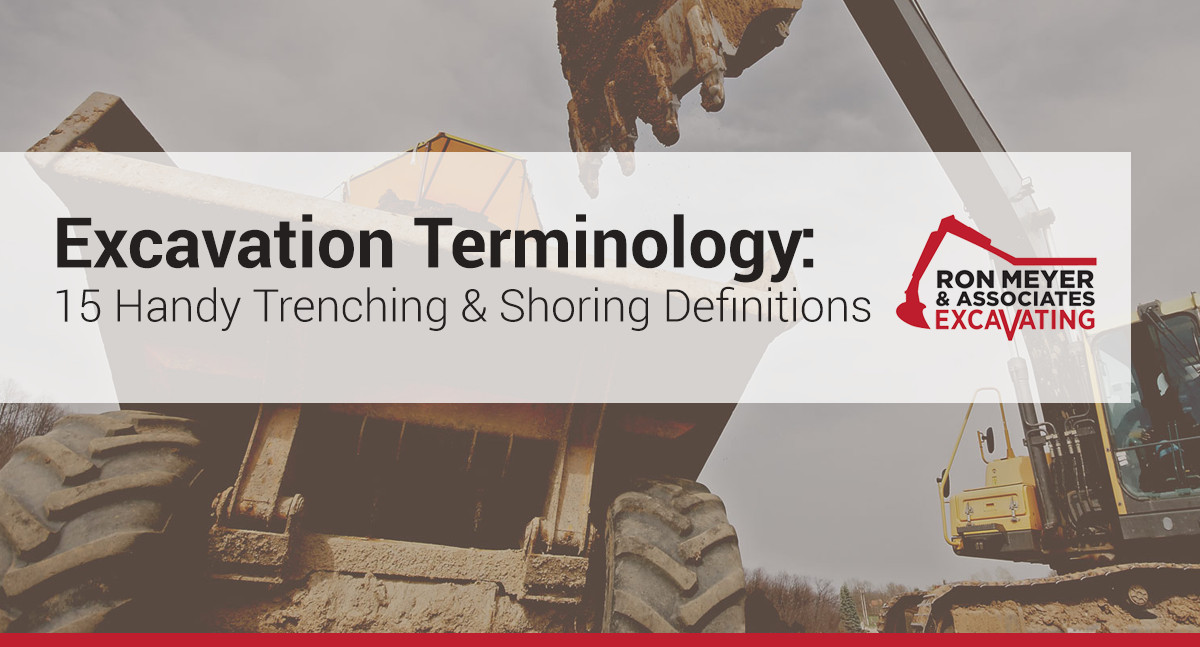
The definitions listed below are sourced from the OSHA Technical Manual and are intended to assist safety and health consultants, OSHA field staff, and others in the recognition of trenching and shoring hazards and their prevention. For additional information about the source of our excavation terminology list, please see OSHA’s Excavations: Hazard Recognition in Trenching and Shoring.
Accepted Engineering Practices
Accepted Engineering Practices are procedures compatible with the standards of practice required of a registered professional engineer.
Adjacent Structures Stability
Adjacent Structures Stability refers to the stability of the foundation(s) of adjacent structures whose location may create surcharges, changes in soil conditions, or other disruptions that have the potential to extend into the failure zone of the excavation or trench.
Competent Person
Competent Person is an individual who is capable of identifying existing and predictable hazards or working conditions that are hazardous, unsanitary, or dangerous to employees, and who has authorization to take prompt corrective measures to eliminate or control these hazards and conditions.
Confined Space
Confined Space is a space that, by design and/or configuration, has limited openings for entry and exit, unfavorable natural ventilation, may contain or produce hazardous substances, and is not intended for continuous employee occupancy.
Excavation
An Excavation is any man-made cut, cavity, trench, or depression in an earth surface that is formed by earth removal. A Trench is a narrow excavation (in relation to its length) made below the surface of the ground. In general, the depth of a trench is greater than its width, and the width (measured at the bottom) is not greater than 15 ft (4.6 m). If a form or other structure installed or constructed in an excavation reduces the distance between the form and the side of the excavation to 15 ft (4.6 m) or less (measured at the bottom of the excavation), the excavation is also considered to be a trench.
Hazardous Atmosphere
Hazardous Atmosphere is an atmosphere that by reason of being explosive, flammable, poisonous, corrosive, oxidizing, irritating, oxygen-deficient, toxic, or otherwise harmful may cause death, illness, or injury to persons exposed to it.
Ingress and Egress
Ingress and Egress mean “entry” and “exit,” respectively. In trenching and excavation operations, they refer to the provision of safe means for employees to enter or exit an excavation or trench.
Protective System
Protective System refers to a method of protecting employees from cave-ins, from material that could fall or roll from an excavation face or into an excavation, and from the collapse of adjacent structures. Protective systems include support systems, sloping and benching systems, shield systems, and other systems that provide the necessary protection.
Registered Profession Engineer
Registered Professional Engineer is a person who is registered as a professional engineer in the state where the work is to be performed. However, a professional engineer who is registered in any state is deemed to be a “registered professional engineer” within the meaning of Subpart P when approving designs for “manufactured protective systems” or “tabulated data” to be used in interstate commerce.
Support System
Support System refers to structures such as underpinning, bracing, and shoring that provide support to an adjacent structure or underground installation or to the sides of an excavation or trench.
Subsurface Encumbrances
Subsurface Encumbrances include underground utilities, foundations, streams, water tables, transformer vaults, and geological anomalies.
Surcharge
Surcharge means an excessive vertical load or weight caused by spoil, overburden, vehicles, equipment, or activities that may affect trench stability.
Tabulated Data
Tabulated Data are tables and charts approved by a registered professional engineer and used to design and construct a protective system.
Underground Installations
Underground Installations include, but are not limited to, utilities (sewer, telephone, fuel, electric, water, and other product lines), tunnels, shafts, vaults, foundations, and other underground fixtures or equipment that may be encountered during excavation or trenching work.
Unconfined Compressive Strength
Unconfined Compressive Strength is the load per unit area at which soil will fail in compression. This measure can be determined by laboratory testing, or it can be estimated in the field using a pocket penetrometer, by thumb penetration tests, or by other methods.
At Ron Meyer & Associate Excavating, Inc, we’ve been providing underground and commercial construction to private and commercial businesses for 39 years. As the general contractor or subcontractor, our experienced foremen, equipment operators, pipe layers, truck drivers and well-maintained equipment fleet make us an undeniable choice for your excavating services. Let’s talk about your project!

As 45 years of experience as an underground/site contactor and a third generation contractor, Ron takes time to go through each individual project with the supervisor and is responsible for all scheduling and equipment logistics. He’s also involved in all troubleshooting for projects.